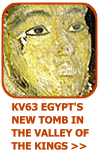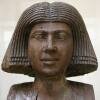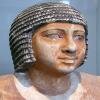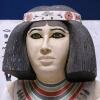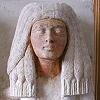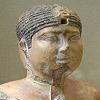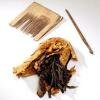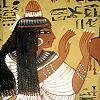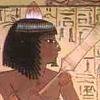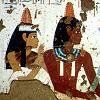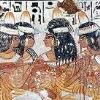|
|
|||||||||||||||||||||
|
|
Fashion and style pages: dress and costume | wigs and hair
The Egyptians were famous for their wigs, usually made from human hair and braided and styled in countless different ways, from the simple to sheer elaborate. In much the same way as in 18th century Europe, hair was of great importance, and both male and female, rich and poor alike, treated their hair as a highly pliable form of self expression.
Hair pieces in the form of false plaits and curls were sometimes added to the existing hair, even in the case of relatively poor individuals, although full wigs were actually much more common. Many wigs were extremely complex, and arranged into careful braids and strands. Although usually made of human hair, some wigs would have a padding made of vegetable fibres beneath the surface. This would have given the wigs their familiar fullness and thickness.
Incense and perfume ... There are numerous representations of guests at banquets and public functions who wear incense cones on top of their heavy wigs. These incense cones can be found on both men and women, and were made up of aromatic incense mixed with fat.
It has now been suggested that the depiction of the incense cone is used simply to convey the idea that the wigs were scented. Such incense cones have never been discovered archaeologically, and it does seem plausible that the cones illustrate a fact that would otherwise be impossible to represent in a pictorial form. A cure for baldness and grey hair ...
Sometimes the hair would be dyed, even after death, with vegetable henna - still a very popular choice throughout Egypt and the Middle East today. The henna would dye the naturally dark hair a deep auburn colour, and the unpigmented grey hairs would usually be much lighter in colour. Back to fashion and style>>
|
||||||||||||||||||||

|
|||||||||||||||||||||
|
|||||||||||||||||||||





